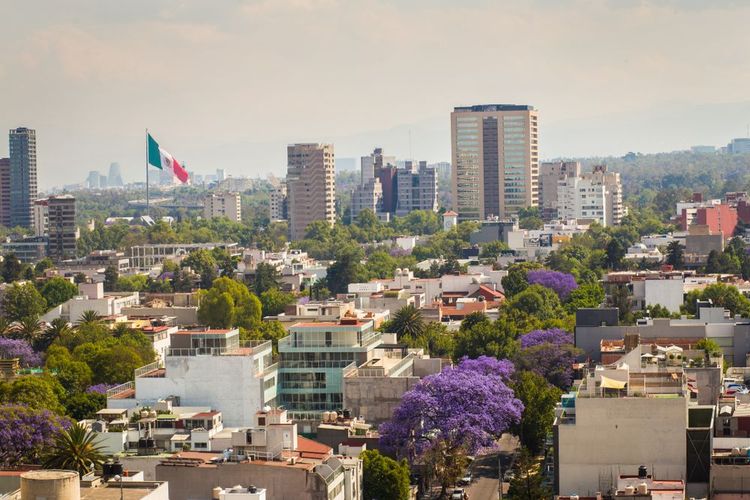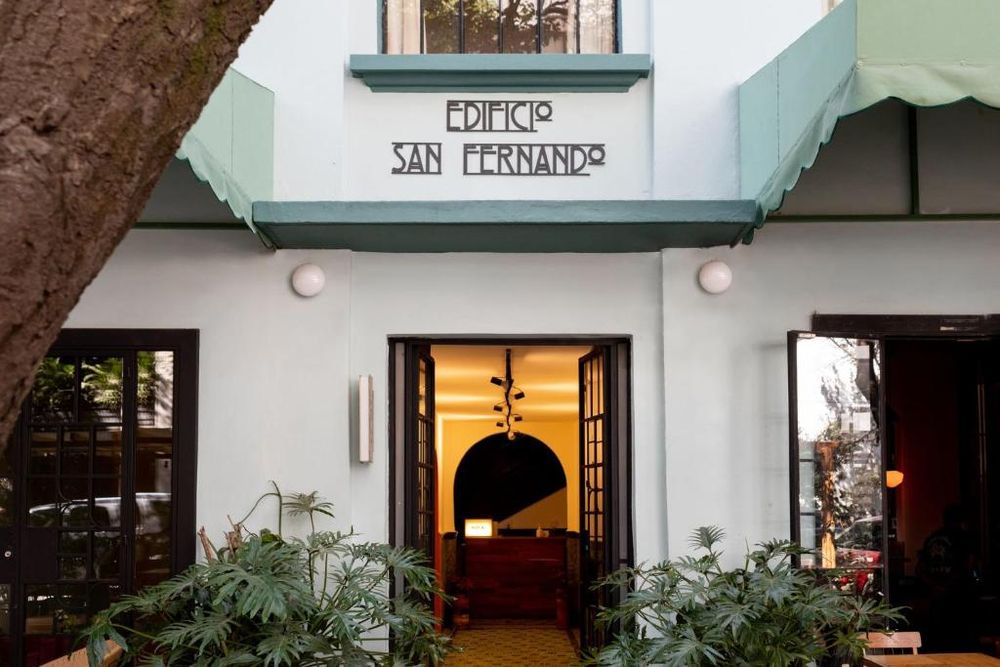Just as in many parts of the world the arrival of spring is heralded by cherry and almond blossom, in Mexico City it is the jacaranda trees that mark the arrival of the season. Since the climate in this region is not particularly cold in winter and there is no shortage of sunlight, the vibrant lilac blossoms have come to send other messages to those in Madrid, Paris, Tokyo and Washington. For some years now, the violet flowers of the jacarandas have been heralding the social movement.
The streets of the Mexican capital are complicated. It is one of the largest cities in the world and also one of the most populated. But during March, the jacarandas, which were imported by a Japanese man, dress Mexico City in that vibrant lilac -colour also shared by feminists- and put on an unexpected show in the hectic city.

La cúpula de Bellas Artes detrás de las jacarandas, Ciudad de México.
- © valentedlp / Shutterstock
Ciudad de México en marzo
- © Marcelo Rodriguez / ShutterstockThe arrival of the jacarandas
The story of how these trees arrived in Mexico goes back to the 19th century. The jacarandas - with the scientific name Jacaranda mimosifolia - originated in Brazil, but arrived in the Mexican capital by order of Tatsugoro Matsumoto, a gifted and renowned Japanese gardener who emigrated to Mexico in 1896 and quickly became the chosen one of the then president and dictator Porfirio Díaz, who had an obsession with turning the capital into a city as beautiful as Paris.
It was not until the 1920s that jacarandas began to grow in the streets of Mexico City, but initially Matsumoto wanted to plant cherry trees, following a fashion that many cities followed to beautify themselves with the arrival of spring. But the climate in CDMX was not the most suitable for these trees, which need colder temperatures. The Japanese landscape designer had seen jacarandas in Peru, and thought it would be a good substitute for the city to celebrate the spring equinox with lilac flowers.
Now, these trees, which can grow up to 20 metres tall and live for a century or more, are an emblem of the city. Poems have been written about their flowers, and although their enormous roots break the pavement and destabilise the pavements, in Mexico City they are known to be righteous and untouchable roots.
"Let them know that you nurture us, that they are as necessary as being in love, that without them March would have to be named differently."
Since 2020, after years of feminist struggle and waves of gender violence that provoked a mobilisation never seen before, they mean more than the end of winter. With women dressed in the same colour as the flowers on filled-of-trees streets, the jacarandas of the Mexican capital also became a symbol of the struggle for the end of machismo and the fall of patriarchy. They call it the jacaranda revolution.
Where to see the jacarandas
Although there are these trees all over the city, there are some places where you can enjoy the springtime spectacle with special emphasis.
Paque Mexico and Parque España
La Condesa, the cultural and social nerve centre of Mexico City, has two parks (Mexico and España) with many jacarandas. It is one of the most touristy neighbourhoods in the city, so you can't miss it, plus it is very central. Although it is a terrible victim of gentrification and you almost hear more English than Spanish in its streets, it is still an emblematic neighbourhood of this great city. And in March it dresses in lilac with all the jacarandas that surround it.
Alameda Central
The bustling, hectic, bustling, unlikely, gorgeous city centre is an excellent place to enjoy the jacarandas in March, particularly in the Alameda Central. From here you can see the art nouveau Palacio de Bellas Artes, which is frankly spectacular, and in the shade of the jacarandas it is even more enjoyable.
Chimalistac
In the south of the city there is a bubble that seems to have been lost from the madness that rules Mexico City. Chimalistac is a residential colonia with pre-Hispanic origins that maintains an unprecedented calm, with cobblestone streets and stone bridges that once served to cross the Magdalena River that ran through it. The parks it still maintains have many jacarandas, which contrast with the colours of the volcanic stone and provide a much-needed respite.
Stay in Mexico City
 Mexico City
Mexico City




